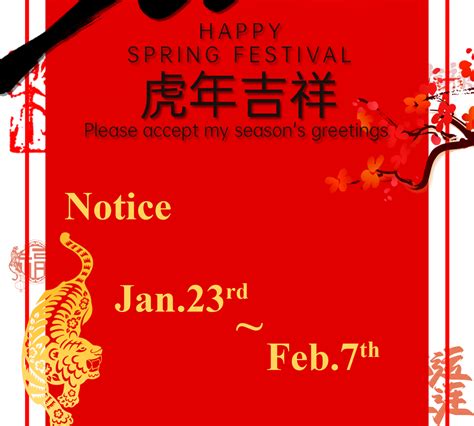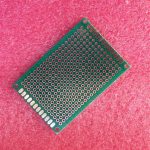Overview of the 2019 Spring Festival
The Chinese Spring Festival, also known as the Lunar New Year or chunjie (春节), is the most important traditional holiday in China. It marks the beginning of a new year on the traditional Chinese calendar. In 2019, the Spring Festival falls on February 5th, ushering in the Year of the Pig.
The Spring Festival is a time for families to gather together, enjoy festive meals, exchange gifts, and participate in various customs and traditions. The holiday period lasts for 15 days, from the Lunar New Year’s Eve until the Lantern Festival. Many people get a week off work to travel and spend time with relatives.
Key Dates of the 2019 Spring Festival
Date
Festival
Feb 4
Lunar New Year’s Eve
Feb 5
Lunar New Year’s Day
Feb 19
Lantern Festival
Traditions and Customs
Lunar New Year’s Eve
Lunar New Year’s Eve, known as chúxī (除夕), falls on February 4th in 2019. This is the most important day of the Spring Festival, when families gather together for a large reunion dinner known as niányèfàn (年夜饭). The meal often includes symbolic dishes such as fish (鱼 yú), which represents surplus and abundance, and dumplings (饺子 jiǎozi) which resemble ancient Chinese gold ingots.
Other New Year’s Eve traditions include:
Offering sacrifices to ancestors
Giving red envelopes containing money (hóngbāo 红包) to children
Staying up late to watch the CCTV New Year’s Gala on TV
Setting off firecrackers at midnight
Decorating homes with red lanterns, couplets, and paper cuttings
Lunar New Year’s Day
The first day of the Lunar New Year is known as yuándàn (元旦) and falls on February 5th in 2019. This is a day for visiting relatives, exchanging greetings and gifts, and enjoying festive meals. Many people dress in new clothes and children receive red envelopes with money from parents and grandparents.
Taboos on New Year’s Day include:
Lantern Festival
The Lantern Festival, called yuánxiāojié (元宵节), marks the end of the Spring Festival period on the 15th day of the first lunar month (February 19th in 2019). The holiday gets its name from the colorful lanterns that people hang and carry. Other traditions include:
Eating tangyuan (汤圆), sweet glutinous rice balls that symbolize family unity
Solving riddles written on lanterns
Lion and dragon dances
Setting off firecrackers and fireworks
Traditional Decorations
Homes are thoroughly cleaned and then decorated in red and gold prior to the Lunar New Year. Some common traditional decorations include:
Spring Festival Couplets
Spring Festival couplets, known as chūnlián (春联), are pairs of poetry lines written in black or gold ink on red paper. They express wishes for good fortune, wealth, longevity, happiness and more in the coming year. Couplets are pasted on both sides of doorways.
“Fu” Character
The character “fu” (福), meaning good fortune and blessing, is written on red diamond-shaped paper and pasted on doors, often upside down. The word for “upside down”, dào (倒), is a homonym of “to arrive” – so an upside down fu symbolizes that blessings have arrived.
Red Lanterns
Red lanterns are hung inside and outside homes and along streets. They symbolize a festive atmosphere and also drive away evil spirits. Lanterns often have auspicious messages and symbols.
New Years Pictures
Nianhua (年画), or New Year’s pictures, are a kind of Chinese colored woodblock print. They depict symbolic motifs like door gods, the Kitchen God, auspicious children, myths, and more. The pictures are pasted on walls, doors and windows.
Travel During the Spring Festival
The Spring Festival travel rush, known as chūnyùn (春运), is the largest annual human migration in the world. In 2019, it is expected that Chinese people will take nearly 3 billion trips between January 21st and March 1st for family reunions and tourism.
To handle the huge surge of travelers, China adds thousands of temporary trains, buses and flights. Tickets are hard to acquire and prices of hotels and other accommodations soar. Popular tourist sites become extremely crowded. Travelers need to book tickets and make reservations far in advance.
Chunyun Statistics
Year
Passenger Trips
2019
2.99 billion (estimated)
2018
2.97 billion
2017
2.80 billion
2016
2.66 billion
Source: National Development and Reform Commission
Impact on the Economy
The Spring Festival has a big impact on China’s economy due to the long holiday period, travel rush, and spending on gifts, decorations, food and entertainment. Some sectors boom while others shut down.
Sectors That Benefit
Retail – Department stores, supermarkets and shops see a surge in sales, especially for gifts, food, alcohol, clothes and electronics. E-commerce sites hold big sales promotions.
Catering – Restaurants are busy with New Years Eve dinners and family gatherings. Food delivery apps see more orders.
Tourism – Domestic and international tourism spikes as people have a week off. Tourist sites and hotels can charge premium prices.
Transportation – Train tickets, flights, bus fares, gas, taxis and ride sharing apps are in high demand.
Entertainment – Movie ticket sales jump as new films are released. Sales of mahjong sets, poker cards and board games also increase for family gatherings.
Sectors That Slow Down
Manufacturing – Most factories shut down for a week or more, delaying production and export orders. Many migrant workers travel home.
Construction – Projects stall as workers leave for the holidays. Getting them to return promptly can be challenging.
Business services – Offices are closed and deals are put on hold until after the holiday.
Superstitions and Taboos
The Spring Festival is full of superstitions, taboos and beliefs intended to start the year on an auspicious note. Following these can supposedly bring good luck, health and prosperity, while violating them may cause misfortune. Some common ones include:
Avoid unlucky words – Negative words like “death”, “sick”, “ghost”, “kill”,”break” etc are taboo. Auspicious words related to wealth, happiness and longevity are favored.
Don’t wash clothes or hair – Washing on New Year’s Day may wash away good luck. Taking a bath is okay.
Don’t sweep or take out garbage – This may sweep or throw away good fortune. Cleaning should be done before the New Year.
Don’t use knives or scissors – Sharp objects may “cut” your stream of wealth and success.
Wear red clothing – Red is the most auspicious color and can scare away spirits of bad fortune. Black and white are unlucky colors.
Don’t fight or cry – Arguments, crying and frowning may lead to inauspicious things for the year. Smiling and laughter are favored.
Don’t break things – Shattered bowls or glasses are a bad omen. If it happens, wrap it in red paper and say “sui sui ping an” (岁岁平安) which has the same pronunciation as “broken” (碎 suì) but means “safe and sound every year.”
Regional Differences
Although the Lunar New Year is celebrated all across China, there are some regional differences in traditions and customs.
North China
In Beijing and other northern areas, people eat jiaozi (dumplings) on New Year’s Eve, especially at midnight. They also enjoy nian gao (年糕), a sticky rice cake.
South China
In the south, niangao is more popular than dumplings. A famous dish is fa gao (发糕), a spongy rice cake that rises, symbolizing prosperity. Southerners also tend to eat more seafood and vegetables compared to the north.
East China
In Shanghai, Hangzhou, Nanjing and eastern China, qingtuan (青团), sweet green sticky rice balls, are a popular snack. The green color comes from barley grass or mugwort.
Central China
In Wuhan and the Hubei province, reba (热粑) is a must-have treat for the New Year. It is a dense sticky rice snack with sesame, osmanthus flowers or beans.
Southwest China
In Sichuan and Chongqing, people eat spicy dumplings in red chili oil for New Year’s Eve. They also set off firecrackers in the morning to ward off the Nian monster.
Global Celebrations
The Lunar New Year is celebrated not only in Mainland China, but also in Hong Kong, Macau, Taiwan, Singapore and in Chinatowns across the world. Traditions vary but always center on family reunions and wishes for good fortune.
Hong Kong
The biggest event is the Lunar New Year Night Parade in Tsim Sha Tsui, featuring elaborate floats and performances. Thousands also go to the Che Kung Temple and Lam Tsuen Wishing Trees to make wishes.
Taiwan
On New Year’s Eve, the Taipei 101 skyscraper sets off a huge fireworks display. The Lantern Festival in Pingxi is famous for releasing thousands of sky lanterns with wishes written on them.
Singapore
The Chingay Parade held 2 days before the New Year is a lively street parade with colorful floats, clowns, dancers and acrobats. On the eve, people participate in the lou hei (捞起) tradition of tossing yu sheng, a raw fish salad, while saying auspicious wishes.
Chinatowns
Chinatowns in cities like New York, San Francisco, London, Sydney and Vancouver hold Lunar New Year parades featuring lion and dragon dances, firecrackers, martial arts demonstrations and cultural performances. People dine out at Chinese restaurants and exchange red envelopes.
FAQ
How long is the 2019 Chinese Spring Festival public holiday?
The official public holiday is 7 days long, from February 4th to February 10th, 2019. However, the holiday period including the Spring Festival, Lantern Festival and travel rush lasts up to 40 days.
What zoDIAC animal represents the year 2019?
2019 is the Year of the Pig (豬 zhū) according to the Chinese zodiac 12-animal cycle. The Pig is the twelfth and final animal. People born in pig years are said to be honest, patient, hardworking and generous.
What gifts are exchanged during Chinese New Year?
Common gifts include red envelopes with cash (usually in even numbers), alcohol, tea, fruit, candy and baked goods. It’s best to avoid giving clocks, scissors, pears or umbrellas as they have negative symbolism.
What flowers are associated with the Spring Festival?
Plum blossoms, orchids, peonies and water narcissus are popular Lunar New Year flowers. Kumquat trees, pussy willows and bamboo are also auspicious plants.
How do you say “Happy New Year” in Chinese?
The most common New Year greeting is “xīn nián kuài lè” (新年快乐) which means “Happy New Year”. You can also say “gōng xǐ fā cái” (恭喜发财) meaning “wishing you happiness and prosperity.”







Leave a Reply